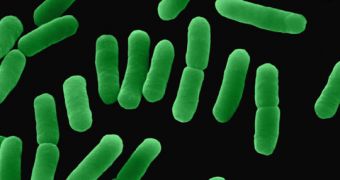How about replacing silica computer chips with a living organism, such as E. coli? Digital computers today are very fast, however researchers believe that living computers could prove one day a lot faster and powerful than any other silicon supercomputer. And just to prove the concept, they have created such a living computer and used it to solve a classic mathematical puzzle, popularly known at the Burnt Pancake Problem.
"The computing potential of DNA far exceeds that of any other material. If we figure out how to increase that capacity in a practical manner we will have much more computing power," said leader of the study Karmella Haynes, from Davidson University.
The Burnt Pancake Problem involves creating a golden pyramid of pancakes, with the help of differently sized pancakes that are burned on one side. The goal is to create a pyramidal structure, in which the largest pancake sits at the bottom, and all pancakes are placed burned side down. Each change in pancake size and orientation is considered as a flip, regardless of the number of consecutive pancakes. This has to be done in the fewest possible number of flips.
The problem is relatively simple when it involves only a few pancakes and increases in difficulty as the number of pancakes rises. In the case or six pancakes for example, there are 46,080 possible ways to solve the puzzle, which rises to 1.9 trillion possible solutions when the number of pancakes reaches 12.
Silicon powered digital computers are programmed to run every possible permutation until the problem is solved, which accounts for a very very long processing time. However, in the case of biological systems multiple permutations are run simultaneously, thus dramatically increasing the processing speed.
In the case of E. coli bacteria, this is done by flipping strands in the DNA code with the help of a flagellin protein collected from a salmonella bacteria and injected into E. coli. Flagellin proteins behave much in the same way as a switching mechanism, which protects the bacteria when it infects an organism in order to stay alive, by allowing antibiotics immunity.
This property can be harnessed in live computers by presenting the bacteria with a special antibiotic, which it must fight by flipping the DNA strands of E. coli. If the bacteria is unable to solve the puzzle, then it cannot gain immunity and will die. The pancake puzzle used in the study contained only two pancakes and took a lot of time to solve, albeit the bacteria had solved it. Therefore, it is able to solve puzzles with much more pancakes.
"This will open the door to a wide variety of biological computing," said synthetic biologist Tom Knight from the Massachusetts Institute of Technology. That doesn't mean, however, that we'll be seeing living supercomputers anytime soon. "This won't make your Xbox run faster," Knight added.

 14 DAY TRIAL //
14 DAY TRIAL //